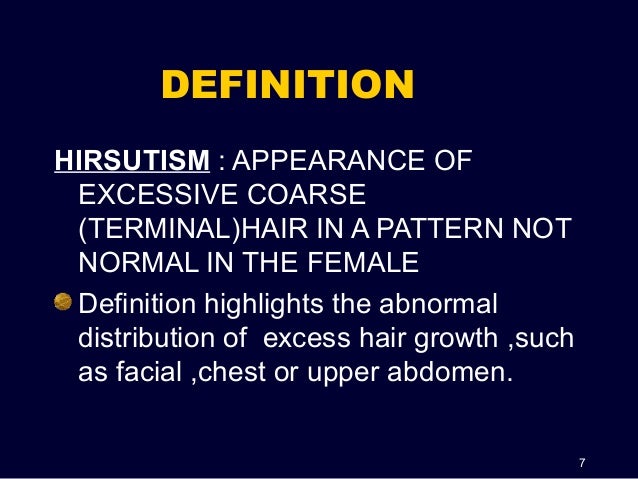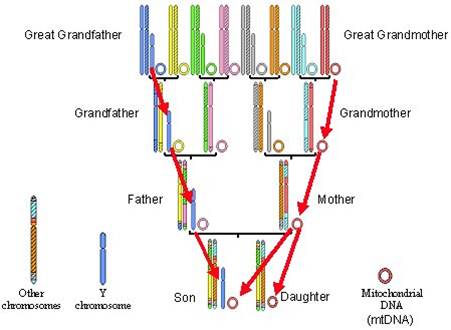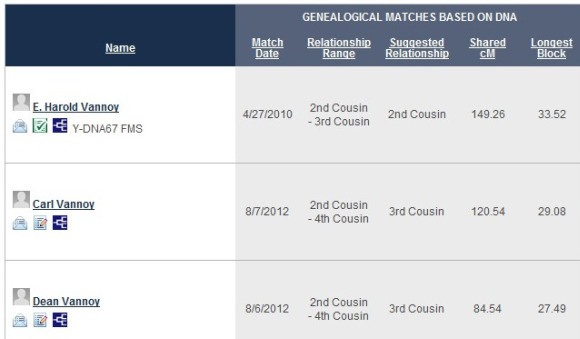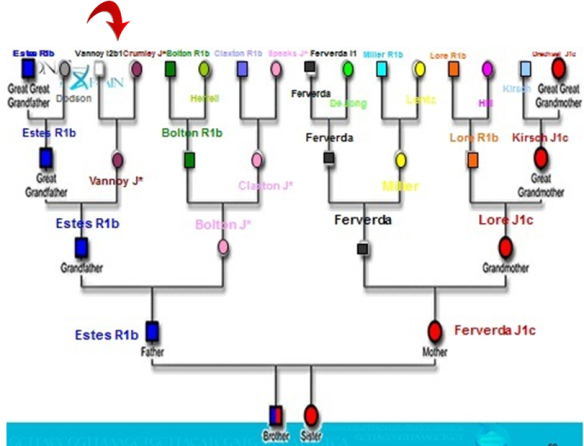
Social Justice Warrior don't want to be be confused by the facts because facts are not necessary when implementing Social Justice Warrior policies and programs.This Social Justice Warrior narrative is designed to cover up the falsehood of the first and second narratives. This is the way liberals work.., serving up propaganda intended to benefit Social Justice Warrior, but which in its absurdity repels people grounded in reality
Wednesday, September 28, 2016
Monday, September 26, 2016
Can Confused Gender Women Grow Mustache And Beard, It;s Medical Condition, Called Hirsutism And It Develops Well After Puberty., That Mean's There Not Born That Way. There Still Female Not Male's! Claim Debunk
Hirsutism is excessive body hair in women on parts of the body where hair is normally absent or minimal, such as on the chin or chest. It refers to a male pattern of hair growth that may be a sign of a more seriousmedical condition, especially if it develops well after puberty.
Treatment for hirsutism often involves a combination of self-care methods, hair-removal therapies and medications.
See Causes Listed Below.
The condition you have, called hirsutism, is not uncommon and can be treated.
Why does hair grow so extensively on a man’s face? Each hair grows out of a little pit in the skin called a follicle. Cells that live in the base of that pit cause the hair to form when androgens (“male” hormones) in the blood reach those cells. So two things are required: androgens in the blood, and cells that respond to androgens by making hairs.
Why would hair grow on some women’s faces the way it grows on most men’s faces? Because men and women are not as different as you might think. Women actually have measurable amounts of androgens in their blood. The levels are much lower than they are in a man’s blood, but they are present. And the cells in the hair follicles on a woman’s face also make hairs in response to androgens.
When a woman has unusually high levels of androgens in the blood, she can start to grow hair in places that most women don’t. Such hair growth may also be caused by cells in the hair follicles that are more easily stimulated by androgens to make hairs, even when androgen levels are normal.
In some cases, the extra androgen comes from medications. Some birth control pills as well as certain steroids contain androgens, or have effects similar to androgens. Other drugs indirectly cause the body to make extra androgen hormones; these include some medicines to treat schizophrenia, seizures, migraine headaches, bipolar disorder and high blood pressure.
Occasionally, an abnormality in the ovaries, the adrenal glands or the pituitary gland can cause overproduction of androgens. One such (common) condition is polycystic ovarian syndrome. Your doctor can rule out these causes with various blood tests.
If your doctor diagnoses a specific cause, he or she can suggest appropriate treatment. For example, the rare tumors that produce androgen hormones can be treated with surgery, radiation or both.
All women with hirsutism can benefit from cosmetic treatments. These include:
- Plucking, shaving, waxing or depilatory creams.
- Laser hair-removal techniques use light to generate heat inside hair follicles, destroying their ability to produce hair.
- Electrolysis also destroys the ability of the follicles to grow hair by using electricity to produce heat within the hair follicles. It can leave small areas of scarring.
Long-term use of medical treatments can decrease levels of androgens or their impact on hair follicles. Medical treatments include:
- Estrogen-containing medicines. Several medicines, including birth control pills that contain both estrogen and progesterone, can alter the impact of androgens.
- Anti-androgen medicines. The most commonly used medicine is spironolactone (Aldactone). Others are available.
- http://www.askdoctork.com/what-causes-excess-facial-hair-in-women-and-how-is-it-treated-201209032898
Causes
At puberty, a girl's ovaries begin to produce a mix of female and male sex hormones. This causes hair to grow in the armpits and pubic area. Hirsutism can occur if the mix becomes unbalanced with too high a proportion of male sex hormones (androgens).
Hirsutism can be caused by:
- Polycystic ovary syndrome. This common condition is caused by an imbalance of sex hormones that may result in irregular periods, obesity, infertility and sometimes multiple cysts on your ovaries.
- Cushing's syndrome. Cushing's syndrome occurs when your body is exposed to high levels of the hormone cortisol. It can develop when your adrenal glands make too much cortisol, or it can occur from taking medications such as prednisone over a long period of time.
- Congenital adrenal hyperplasia. This inherited condition is characterized by abnormal production of steroid hormones, including cortisol and androgen, by your adrenal glands.
- Tumors. Rarely, an androgen-secreting tumor in the ovaries or adrenal glands may cause hirsutism.
- Medications. Some medications can cause hirsutism. One such drug is danazol, which is used to treat women with endometriosis.
Sometimes, hirsutism can occur with no identifiable cause. This happens more frequently in certain populations, such as women of Mediterranean, Middle Eastern and South Asian ancestry.
Friday, September 23, 2016
Tuesday, September 20, 2016
Boy Or Girl? It's In The Father's Genes Are Father Inherit A Tendency To Have Sons Or Daughters And They Get For There Parents. Sex Assigned At Birth, Debunk Again,Proving Again, That Social Justice Warrior Are Idiots!!
FULL STORY

A simplified diagram in which men either have only sons, only daughters, or equal numbers of each, though in reality it is less clear cut.
Credit: Image courtesy of Newcastle University
A Newcastle University study involving thousands of families is helping prospective parents work out whether they are likely to have sons or daughters.
The work by Corry Gellatly, a research scientist at the university, has shown that men inherit a tendency to have more sons or more daughters from their parents. This means that a man with many brothers is more likely to have sons, while a man with many sisters is more likely to have daughters.
The research involved a study of 927 family trees containing information on 556,387 people from North America and Europe going back to 1600.
"The family tree study showed that whether you’re likely to have a boy or a girl is inherited. We now know that men are more likely to have sons if they have more brothers but are more likely to have daughters if they have more sisters. However, in women, you just can’t predict it," Mr Gellatly explains.
Men determine the sex of a baby depending on whether their sperm is carrying an X or Y chromosome. An X chromosome combines with the mother’s X chromosome to make a baby girl (XX) and a Y chromosome will combine with the mother’s to make a boy (XY).
The Newcastle University study suggests that an as-yet undiscovered gene controls whether a man’s sperm contains more X or more Y chromosomes, which affects the sex of his children. On a larger scale, the number of men with more X sperm compared to the number of men with more Y sperm affects the sex ratio of children born each year.
Sons or daughters?
A gene consists of two parts, known as alleles, one inherited from each parent. In his paper, Mr Gellatly demonstrates that it is likely men carry two different types of allele, which results in three possible combinations in a gene that controls the ratio of X and Y sperm;
- Men with the first combination, known as mm, produce more Y sperm and have more sons.
- The second, known as mf, produce a roughly equal number of X and Y sperm and have an approximately equal number of sons and daughters.
- The third, known as ff produce more X sperm and have more daughters.
“The gene that is passed on from both parents, which causes some men to have more sons and some to have more daughters, may explain why we see the number of men and women roughly balanced in a population. If there are too many males in the population, for example, females will more easily find a mate, so men who have more daughters will pass on more of their genes, causing more females to be born in later generations,” says Newcastle University researcher Mr Gellatly.
More boys born after the wars
In many of the countries that fought in the World Wars, there was a sudden increase in the number of boys born afterwards. The year after World War I ended, an extra two boys were born for every 100 girls in the UK, compared to the year before the war started. The gene, which Mr Gellatly has described in his research, could explain why this happened.
As the odds were in favour of men with more sons seeing a son return from the war, those sons were more likely to father boys themselves because they inherited that tendency from their fathers. In contrast, men with more daughters may have lost their only sons in the war and those sons would have been more likely to father girls. This would explain why the men that survived the war were more likely to have male children, which resulted in the boy-baby boom.
In most countries, for as long as records have been kept, more boys than girls have been born. In the UK and US, for example, there are currently about 105 males born for every 100 females.
It is well-documented that more males die in childhood and before they are old enough to have children. So in the same way that the gene may cause more boys to be born after wars, it may also cause more boys to be born each year.
How does the gene work?
The trees (above) illustrate how the gene works. It is a simplified example, in which men either have only sons, only daughters, or equal numbers of each, though in reality it is less clear cut. It shows that although the gene has no effect in females, they also carry the gene and pass it to their children.
In the first family tree (A) the grandfather is mm, so all his children are male. He only passes on the m allele, so his children are more likely to have the mm combination of alleles themselves. As a result, those sons may also have only sons (as shown). The grandsons have the mf combination of alleles, because they inherited an m from their father and an f from their mother. As a result, they have an equal number of sons and daughters (the great grandchildren).
In the second tree (B) the grandfather is ff, so all his children are female, they have the ff combination of alleles because their father and mother were both ff. One of the female children has her own children with a male who has the mm combination of alleles. That male determines the sex of the children, so the grandchildren are all male. The grandsons have the mf combination of alleles, because they inherited an m from their father and f from their mother. As a result, they have an equal number of sons and daughters (the great-grandchildren).
Story Source:
The above post is reprinted from materials provided byNewcastle University. Note: Content may be edited for style and length.
Journal Reference:
- Gellatly et al. Trends in Population Sex Ratios May be Explained by Changes in the Frequencies of Polymorphic Alleles of a Sex Ratio Gene. Evolutionary Biology, Dec 11, 2008; DOI: 10.1007/s11692-008-9046-3
Family Tree D.N.A Are Father Determines Are Gender, Understanding DNA, HOW MANY Gender? There Only Two! That Not Hate Speech,This IS Scientific Research, Sex Assigned At Birth, Debunk, Proving Again, That Social Justice Warrior Are Idiots!!
DNA is the carrier of our genetic information, and is passed down from generation to generation. All of the cells in our bodies, except red blood cells, contain a copy of our DNA.
At conception, a person receives DNA from both the father and mother. We each have 23 pairs of chromosomes. Of each pair, one was received from the father and one was received from the mother. These 23 pairs of chromosomes are known as nuclear DNA because, with the exception of red blood cells, they reside in the nucleus of every cell in our body.
The 23rd chromosome is known as the sex chromosome. As with the other chromosomes, one is inherited from the father, and one from the mother. The 23rd chromosome from the mother is always an X. From the father, a person either inherits an X chromosome or a Y chromosome. The chromosome inherited from the father determines their gender. An X from the father would result in an XX combination, which is a female. A Y from the father would result in an XY combination, which is a male.


We also inherit our mitochondrial DNA, mtDNA, from our mother, and none from our father. Mitochondrial DNA is located outside the nucleus of the cell.

DNA is made up of four bases: adenine (A), cytosine (C), thymine (T), and guanine (G). The order of these bases is called the DNA sequence.

Whenever a particular base is present on one side, its complementary base is found on the other side. In the example above, see how the bases always occur in complementary pairs. Guanine (green) always pairs with cytosine (red) and thymine (yellow) always pairs with adenine (blue). So we can write the DNA sequence by listing the bases along either one of the two sides. In the example shown, one side reads:
T G T T C G T C etc.
For Genetic Genealogy, which is the application of DNA testing to genealogy research, two types of DNA can provide information useful in conjunction with genealogy research. These two types are the Y chromosome and mitochondrial DNA.
Y-Chromosome DNA
The Y chromosome is transmitted from father to son. Testing the Y chromosome provides information about the direct male line, meaning the father to his father and so on. The locations tested on the Y chromosome are called markers. Occasionally a mutation occurs at one of the markers in the Y chromosome. Mutations are simply small changes in the DNA sequence. They are natural occurrences and take place at random intervals. Overall, they are estimated to occur once every 500 generations per marker. Mutations can sometimes be valuable in identifying branches of a family tree.
Each marker has a name assigned to it by the scientific community, such as DYS#391, DYS#439 or GATA H4. The scientists classify these markers as Short Tandem Repeats
STRs
The markers used in our standard Y-DNA Tests are classified by scientists as Short Tandem Repeats, STR. They are called because at each of these marker locations a short DNA code repeats itself. The result for a marker is the number of times the code repeats at that location and is called the allele value. Each marker has a name assigned to it by the scientific community, such as DYS391, DYS439 or GATA H4.
The result received for a Y-DNA test is a string of allele values called a haplotype. Here is an example of a haplotype for someone who took the Y-DNA 37 marker test:
PANEL 1
| LOCUS |
1
|
2
|
3
|
4
|
5
|
6
|
7
|
8
|
9
|
10
|
11
|
12
|
|---|---|---|---|---|---|---|---|---|---|---|---|---|
| DYS# |
393
|
390
|
19*
|
391
|
385a
|
385b
|
426
|
388
|
439
|
389-1
|
392
|
389-2
|
| ALLELES |
12
|
24
|
14
|
10
|
11
|
15
|
12
|
12
|
12
|
13
|
13
|
29
|
PANEL 2
| LOCUS |
13
|
14
|
15
|
16
|
17
|
18
|
19
|
20
|
21
|
22
|
23
|
24
|
25
|
|---|---|---|---|---|---|---|---|---|---|---|---|---|---|
| DYS# |
458
|
459a
|
459b
|
455
|
454
|
447
|
437
|
448
|
449
|
464a**
|
464b**
|
464c**
|
464d**
|
| ALLELES |
17
|
9
|
10
|
11
|
12
|
24
|
15
|
19
|
28
|
15
|
16
|
17
|
17
|
*Also known as DYS 394
**On 5/19/2003, these values were adjusted down by 1 point due to a change in Lab nomenclature.
**On 5/19/2003, these values were adjusted down by 1 point due to a change in Lab nomenclature.
You can read about using Short Tandem Repeats on the y-Chromosome to compare results.
Surname Project
A Surname Project is a project which is established to test and compare those with a common surname and variants. A Surname Project has a leader known as the Group Administrator. This person assists the members with understanding their results, typically interprets the results for the group, and may publish this information in a newsletter or web site.
There are a wide variety of applications for Y-DNA testing. Y-DNA testing can be used to confirm the paper genealogical research for your family tree. It can determine which family trees with the same or variant surnames are related, and can provide clues to help you with your genealogy research. These are just a few of the applications for Y-DNA testing.
Since the Y chromosome is only found in men, those who take the Y-DNA test must be males. For females who are interested in the Y-DNA result for their surname or family tree, a close male relative with that surname would need to provide the sample.
Y-DNA Haplogroups
Using the results of a Y-DNA marker test, Family Tree DNA estimates the tester’s haplogroup. The haplogroup identifies the person's major population group and provides information about the ancient origin of the male line. Family Tree DNA also offers a haplogroup test which participants can use to confirm their haplogroup assignment. The “Backbone” haplogroup test confirms the base haplogroup assignment, and the “Deep Clade” haplogroup test identifies the branch of the haplogroup the person belongs to.

SNPs
Using the results of any of our Y-DNA tests, Family Tree DNA also predicts the haplogroup. The haplogroup identifies the person's major population group and provides information about the ancient origin of the male line. Family Tree DNA also offers a haplogroup test which participants can use to confirm their haplogroup assignment. The "Backbone" haplogroup test confirms the base haplogroup assignment, and the "Deep Clade" haplogroup test identifies the branch of the haplogroup the person belongs to. You may read more about y-chromosome and SNP testing...click here
Mitochondrial DNA
Mitochondrial is passed from mother to child. Since only females pass on their mtDNA, testing the mtDNA tells about the mother, to her mother, and so on along the direct maternal line. Both males and females receive mtDNA from their mothers, so both men and women can test their mtDNA.
While mutations occur in mitochondrial DNA, the rate of mutation is relatively slow. Over thousands of years these mutations build up so that one female line will have a sequence distinguishable from another. As people spread throughout the world, mutations occasionally occurred in different populations over time. This allows us to test the mtDNA to identify the world origin of a person's lineage.
mtDNA is tested and the result is compared to a reference sequence called the Cambridge Reference Sequence (CRS). By comparing an mtDNA sequence to the CRS, we can identify the ancient lineage to which you belong, called the haplogroup. Many haplogroups are continent-specific and some of their branches are region-specific.
Mitochondrial Haplogroups
Haplogroups are labeled alphabetically. Today, anthropologists have identified certain haplogroups that originated in Africa, Europe, Asia, the islands of the Pacific, the Americas, and sometimes particular ethnic groups. Of course, haplogroups that are specific to one region are sometimes found in another, but this is due to more recent migration.

https://www.familytreedna.com/understanding-dna.aspx
HOW MANY Gender? There Only Two! That Not Hate Speech, This Genetic Genealogist Science,Women, Fathers And Family Tree DNA. Gender Identity Debunk Again! Proving Again, That Social Justice Warrior Are Idiots
I’m sometimes amazed at what people believe – and not just a few people – but a lot of people.
Recently, I ran across a situation where someone was just adamant that autosomal DNA could not help a female find or identify her father. That’s simply wrong. Incorrect. Nada! This isn’t, I repeat, IS NOT, true of autosomal testing.
Right here, on Family Tree DNA’s main page, it says as much.
Here is the product description for their Family Finder autosomal test:
“Family Finder uses autosomal DNA (inherited from both the mother and father, four grandparents, eight great-grandparents, etc.) to provide you a breakdown of your ethnic percentages and connect you with relatives descended from any of your ancestral lines within approximately the last 5 generations.”
Now the genetic genealogists among us will know right away where this myth that women can’t find their father using DNA came from. Indeed, it’s a true statement when you’re talking about Y-line DNA. Women don’t have a Y chromosome because it is passed only from father to son. The mitochondrial DNA that she does carry is from her mother’s maternal side, so before autosomal testing, there was no ready tool for women to identify or find missing fathers. For a long time, before autosomal testing, it was said as a general statement that women could not test for their father’s DNA. That statement was true in that context at that time. Not anymore.
The Times, They are A’Changin’
Today, however, there are 4 different DNA tests/tools for DNA testing, all with different purposes and that can be used in different ways, often in tandem.
Where the Y-line test tests just the Y chromosome, the paternal line, and the mitochondrial DNA tests only the direct maternal line, autosomal testing tests your DNA contributed from all of your ancestors, males and females alike.
You can see in the chart below that the son and daughter carry some of every color of the DNA of their great-grandparents. The daughter carries the blue of her great-grandfather’s autosomal and the yellow of his wife’s autosomal, but not the short blue Y chromosome of her father. Only the son has that.
Therefore, you can indeed utilize the information to find missing fathers, for women and men alike, in exactly the same way. The only difference is that men can take the additional Y-line test that women can’t take.
By way of example, let’s look at some of my results at Family Tree DNA.
I have a total of 333 autosomal (Family Finder) matches. My mother has a total of 180 matches and we have a total of 66 common matches. That means that I also have 267 matches from my father’s side.
So let’s say I’m adopted and I’m not really sure which side is which.
I would then begin to construct family trees based on my matches suggested relationship and their common ancestors.
On the chart above, my Vannoy cousins are shown, all with matches to me, and all from my father’s side of the tree. Family Tree DNA’s estimates are very accurate, within one generation, and all are within the range they provide. Their ranges and estimates are more accurate the closer in time they are to you.
If these people are my second cousins, we share common great-grandparents. Third cousins, common great-great grandparents. You’ve just gone from “unknown” to within 3 or 4 generations in one fell swoop. Wow!
If you find a group of people with the same surname or the same ancestral surname, like I did on my Vannoy line, then you can, based on their estimated relationship to you, begin building a combined pedigree chart. All three of these men have uploaded their GEDCOM file, so you can easily see their common ancestor. Their common ancestor is also your common ancestor. You can then narrow the list of possible links from them to you. Once you identify their common ancestor, then continue to work down the tree to current to find someone in the right location at the right time.
On the chart below, which is my DNA pedigree chart, you can see how close the common ancestor of these matches really is to me. We’re only 3 generations from my father. This common couple, Joel Vannoy (1813-1895) and Phoebe Crumley (1818-1900) had 7 children, both male and female. My father descended from one of those 7. Now I’m only two generations from my father. Going from “father unknown” to only two generations away is extremely powerful. This is exactly why these tools hold so much promise for adoptees and others who are searching for their parentage.
In the meantime, you may get lucky and click to open your personal page one day to find a very close, sibling, aunt/uncle or first cousin match. Yes indeed, that can do a world of good to narrow the possible choices of parents. That’s also why I always suggest to people seeking unknown parents that they swim in all of the autosomal pools, Family Tree DNA, 23andMe and Ancestry. You just never know where that answer or critically important hint is going to come from.
I hope you are now a believer and any confusion has been removed. Women cannot take a Y chromosome test to find their father, but that has nothing to do with autosomal DNA tests. Women can, and indeed do find their missing fathers using autosomal DNA.
https://dna-explained.com/2013/06/23/mythbusting-women-fathers-and-dna/
Saturday, September 17, 2016
Social Justice Warriors, You Can’t Pretend to Be ‘Pro-Science’ While You Claim That Men Can Have Babies, No Social Justice Warriors,That Would Be A Confused Gender Women, Claim Debunked Again, Proving Again That Social Justice Warriors Are Idiots
 |
| This is a Real Women. |
Tuesday, August 3, 2010, Here we go again, more bad reporting on the Oregon woman who claims to be a man. This time it's from Australia.
An Australian newspaper recently reported that "Thomas Beatie" had given birth to "his" third child – a product of artificial insemination.
Of course, the journalists reporting this story as "fact" got their facts all wrong.
http://worth-reading-blog.blogspot.com/2010/08/give-me-break-man-cant-birth-babies.html
A woman who “became a man” and then decided that “he” still wanted to have a baby. Key passage:
A woman who “became a man” and then decided that “he” still wanted to have a baby. Key passage:
Sometimes I like to fantasize that I live in a sane country filled with mentally stable people. It’s a nice thing to imagine, but I can never indulge the fantasy for very long. Reality has a tendency to intrude. Just recently I was awoken from such a daydream when I read that Bradley Manning, who is serving a 35-year prison sentence for espionage, will receive taxpayer-funded “gender reassignment surgery.”
To put it plainly, Manning will be castrated so that he can more fully live out the delusion that he’s a woman named Chelsea. Liberals have celebrated the news, declaring that it’s “medically necessary” to mutilate Manning’s genitals because he’s “really a woman inside,” and no woman should be forced to keep the penis that was assigned to her at birth without her consent.
Of course, this news comes only days after Brown University announced it will be putting tampons in the men’s room because, according to the Ivy League school, “not all the people who menstruate are women.”
And that move was made public around the same time that the NCAA decided to pull its championship games out of North Carolina to punish the state for not allowing cross-dressing men to pee in the ladies’ room.
And that news came to us a couple of days after Time published an article titled, “My Brother’s Pregnancy,” which tells the inspiring story of
But what if you are born into a female body, know you are a man and still want to participate in the traditionally exclusive rite of womanhood? What kind of man are you then?
Another way of phrasing that: What if you are born a woman, know you are a man, but want to remain a woman after you become a man? What then?
(Answer: intense psychotherapy.)
And all of this happened a few days before the leftist media threw a collective hissy fit because Donald Trump’s proposed maternity leave policy doesn’t include men. This “controversy” led to one of the more bizarre Twitter interactions I’ve ever seen:
Thursday, September 15, 2016
Subscribe to:
Posts (Atom)






